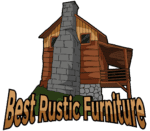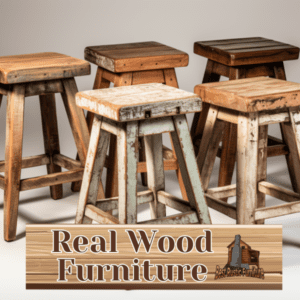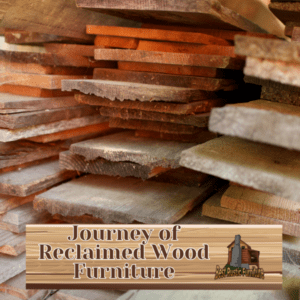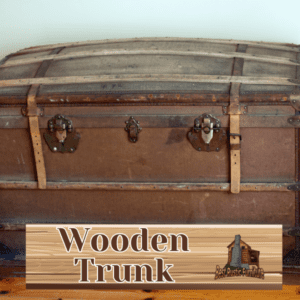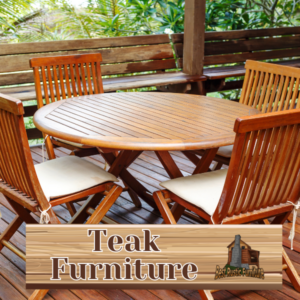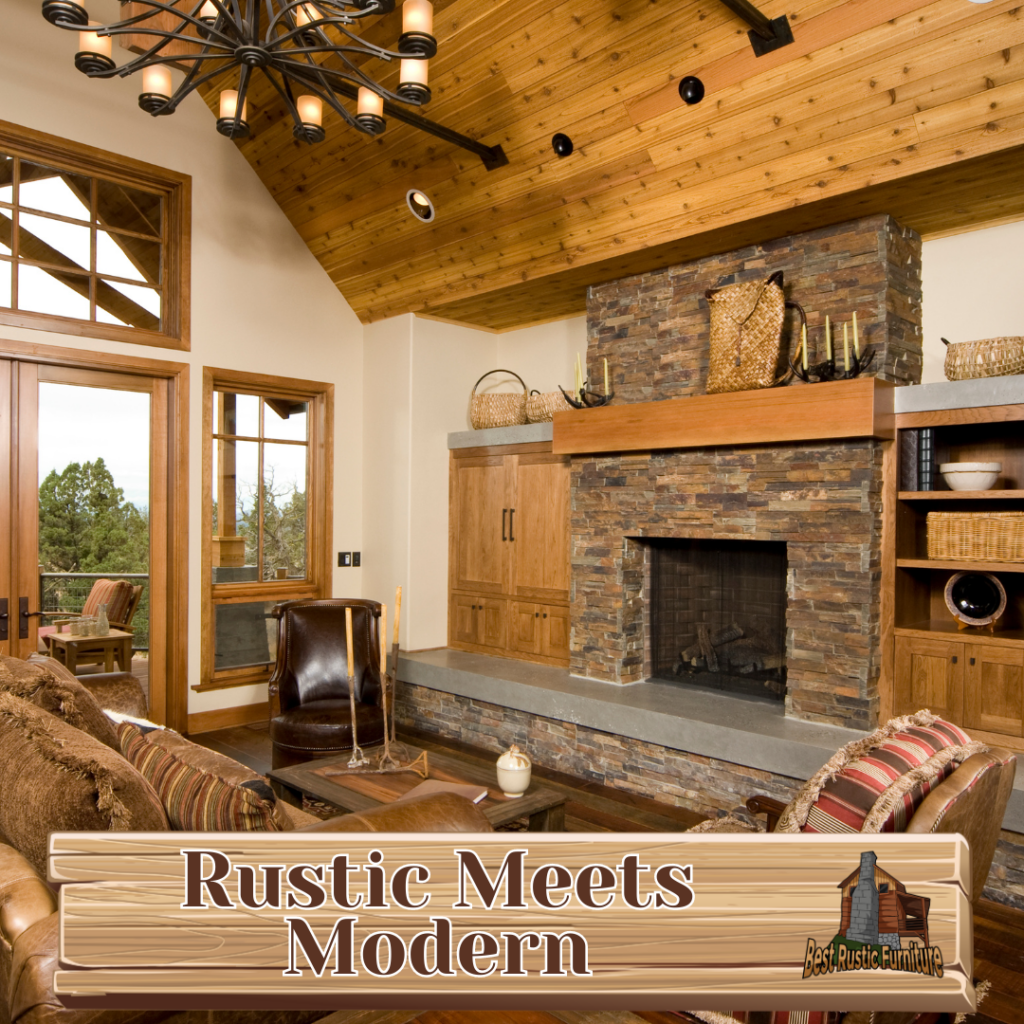
Creating a harmonious living space that combines rustic and modern styles can result in a unique and inviting ambiance. The rustic style embraces natural elements and a warm, cozy atmosphere, while the modern style focuses on sleek lines, minimalism, and contemporary finishes. By blending these contrasting aesthetics, you can achieve a charming and balanced living space that seamlessly integrates the best of both worlds.
The rustic style is characterized by its natural and organic elements, such as reclaimed wood, exposed beams, and stone accents. It evokes a sense of warmth, comfort, and simplicity. On the other hand, the modern style features clean lines, minimalist furniture, and a focus on functionality. It creates a sleek and clutter-free space with a touch of sophistication.
To combine rustic and modern styles successfully, finding the right balance is essential. It involves carefully selecting pieces that represent each style without overpowering one another. Highlighting the contrast between rustic and modern elements can create visual interest and add depth to the overall design. Mixing and matching furniture and decor allows you to blend different textures, materials, and colors in a cohesive and intentional way. Integrating natural and industrial elements, such as combining wooden furniture with metal accents, can further enhance the rustic-meets-modern aesthetic.
Creating a harmonious living space involves incorporating certain design elements. Open floor plans are ideal for combining the two styles seamlessly, as they provide a sense of space and fluidity. A neutral color palette serves as a versatile backdrop that allows rustic and modern elements to stand out. Reclaimed and natural materials, such as weathered wood and exposed brick, add authenticity and charm. Statement lighting fixtures can serve as focal points and bring a modern touch to rustic spaces. Cozy textures, such as faux fur throws or fluffy rugs, create a warm and inviting atmosphere. Lastly, incorporating indoor plants adds freshness and a touch of nature to the overall design.
To successfully decorate a rustic-meets-modern space, keep in mind the importance of balance, contrast, and cohesion. It is essential to make intentional choices when selecting furniture, decor, and finishes to achieve a harmonious and visually appealing living space that merges the rustic and modern styles seamlessly.
Key takeaways:
- Combining rustic and modern styles: Finding the right balance between rustic and modern elements is key to creating a harmonious living space that blends old and new aesthetics.
- Mixing and matching furniture and decor: Integrate both rustic and modern pieces to create an eclectic look that adds character and personality to your living space.
- Integrating natural and industrial elements: Combine natural materials, such as wood and stone, with industrial finishes, like metal and concrete, to achieve a rustic-meets-modern ambiance that feels warm and contemporary.
The Rustic Style
Looking to create a harmonious living space that combines rustic charm with modern elements? Then you’ll want to explore the captivating world of the rustic style. In this section, we’ll uncover the unique characteristics that define rustic design, as well as the materials and colors commonly used to achieve that warm and inviting rustic ambiance. Get ready to infuse your home with a touch of rustic elegance that will surely leave your guests in awe.
Characteristics of Rustic Design
Rustic design embraces nature and incorporates elements that evoke a sense of warmth, simplicity, and authenticity. Some key characteristics of rustic design include:
- Natural materials: Use of materials like wood, stone, and metal that showcase their natural textures and finishes.
- Handcrafted details: Incorporating handmade items, such as rustic furniture and accessories, to add a personal touch.
- Earthy colors: Earth tones like brown, beige, and warm neutrals are common in rustic design to create a cozy and inviting atmosphere.
- Textured surfaces: Rough, weathered surfaces and distressed finishes add character and a sense of history to the space.
- Simple lines: Furniture and decor in rustic design are often characterized by clean lines and simplicity.
Rustic design reminds us of simpler times and pays homage to traditional craftsmanship and natural beauty.
The characteristics of Rustic Design embrace nature and incorporate elements that evoke a sense of warmth, simplicity, and authenticity. Some key features of this design style include:
- Natural materials: Rustic Design makes use of materials such as wood, stone, and metal that showcase their natural textures and finishes.
- Handcrafted details: Incorporating handmade items, such as rustic furniture and accessories, adds a personal touch to the design.
- Earthy colors: Earth tones like brown, beige, and warm neutrals are commonly used in Rustic Design to create a cozy and inviting atmosphere.
- Textured surfaces: Rustic Design embraces rough, weathered surfaces and distressed finishes to add character and a sense of history to the space.
- Simple lines: Furniture and decor in Rustic Design are often characterized by clean lines and simplicity.
Rustic Design reminds us of simpler times and pays homage to traditional craftsmanship and natural beauty.
Materials and Colors Used in Rustic Design
When it comes to rustic design, certain materials and colors are commonly used to capture the cozy and natural feel. Here are some examples of the materials and colors frequently used in rustic design:
- Wood: Rustic design often showcases natural wood elements such as exposed beams, reclaimed wood furniture, or wood paneling.
- Stone: Incorporating stone elements like a fireplace or stone accent wall can add a rustic touch.
- Earthy Colors: Colors like warm browns, earthy greens, and deep reds are commonly used in rustic design to mimic nature.
- Natural Textures: Materials like burlap, linen, and jute can add texture and enhance the rustic style.
- Antiques: Vintage pieces, such as worn leather chairs or weathered wooden tables, can contribute to the rustic aesthetic.
Fun fact: Did you know that the use of reclaimed materials in rustic design helps reduce environmental impact by repurposing and giving new life to old materials?
The Modern Style
Get ready to embrace the sleek and sophisticated world of modern design! In this section, we’ll uncover the essence of modern style by exploring its distinct characteristics and the captivating materials and colors that bring it to life. From clean lines to bold simplicity, we’ll discover how modern design seamlessly blends rustic elements with contemporary flair, creating a harmonious living space that oozes with modernity and charm. So, let’s dive in and unlock the secrets of the modern style!
Characteristics of Modern Design
Characteristics of Modern Design
- Simplicity: Modern design is characterized by minimal ornamentation and clutter-free spaces.
- Clean lines: Straight lines and geometric shapes are key elements of modern design.
- Open floor plans: Modern design encompasses spaces that flow seamlessly from one area to another.
- Neutral color palette: Modern design predominantly uses white, black, and gray colors with occasional pops of bold shades.
- Use of natural materials: Modern design incorporates materials such as wood, glass, and metal to create a harmonious environment.
- Functionality: Modern design emphasizes practicality and efficient use of space and furniture.
Materials and Colors Used in Modern Design
The materials and colors used in modern design are crucial elements in creating a sleek and contemporary aesthetic. Some of the popular materials employed in this design style include glass, stainless steel, and concrete, which contribute to a clean and minimalist look. These materials are often paired with neutral colors like white, gray, and black to maintain a simple and sophisticated atmosphere. To add a touch of vibrancy, accent pieces such as artwork or furniture can incorporate pops of bold colors like red, orange, or blue. By combining these materials and colors in a cohesive and balanced manner, one can achieve a modern space that exudes style and elegance.
Combining Rustic and Modern Styles
Looking to create a harmonious living space that seamlessly blends rustic and modern styles? Dive into the exciting world of combining these contrasting aesthetics. Find the perfect balance between old and new, highlighting their unique contrasts. Get ready to mix and match furniture and decor to create a truly eclectic atmosphere. Discover ingenious ways to seamlessly integrate natural elements with modern industrial touches. Say goodbye to ordinary and embrace the charm of rustic meets modern.
Finding the Right Balance
Finding the right balance is absolutely crucial when it comes to combining rustic and modern styles in your home decor. If you’re looking for tips on how to achieve this harmony, then look no further:
– To start off, make sure to establish a neutral color palette as a solid foundation. This will allow the rustic and modern elements to seamlessly blend together.
– When selecting furniture and decor pieces, aim to mix and match from both styles. It’s important that they complement each other in terms of size, shape, and materials used.
– Don’t shy away from highlighting the contrast between the rustic and modern elements. This will add visual interest and contribute to the overall balance.
– For an even more harmonious design, incorporate natural and industrial elements. This means combining organic textures with sleek finishes, creating a beautiful fusion.
By finding the perfect balance between these two styles, you’ll be able to create a living space that is not only harmonious but also reflects your unique aesthetic.
Highlighting the Contrast
Highlighting the Contrast in Rustic and Modern Interior Design
Incorporating contrasting elements is a crucial aspect when combining rustic and modern styles in interior design. There are various ways to achieve this in your living space. To summarize, here is a table outlining the key methods:
| Contrasting Elements | Examples |
| Materials | Combine reclaimed wood with sleek metal or glass surfaces. |
| Color Scheme | Pair earthy tones like brown and beige with bold, vibrant hues. |
| Furniture | Use a mix of antique rustic pieces alongside contemporary minimalist furniture. |
| Lighting | Install modern, sleek light fixtures in a space with traditional exposed beams. |
| Textures | Blend rough textures like reclaimed wood with smooth textures like polished concrete. |
By emphasizing the contrast within these areas, you can create a harmonious living space that beautifully combines rustic and modern elements.
Mixing and Matching Furniture and Decor
When it comes to creating a harmonious rustic-meets-modern living space, the key is mixing and matching furniture and decor.
- To achieve this, you can find complementary pieces by combining rustic elements such as a wooden coffee table with modern elements like a sleek sofa.
- Another way to create contrast is by pairing a rustic stone fireplace with a modern metal bookshelf.
- Playing with textures can also add interest to the space. For example, you can mix soft textiles on a rustic dining chair with smooth leather on a modern accent chair.
- To blend different styles, consider using a combination of vintage and contemporary artwork, lamps, and decorative objects as accessories.
- Additionally, balancing colors can enhance the overall look. Start with a neutral color palette as a foundation and then add pops of color with accent furniture or decor.
Integrating Natural and Industrial Elements
Integrating Natural and Industrial Elements in a Rustic-Meets-Modern Space
To create a unique and harmonious design, consider incorporating natural and industrial elements in your space. Here are a few ways to achieve this:
- Utilize Reclaimed Wood: Bring in reclaimed wood furniture or accents to add a rustic touch.
- Add Metal Details: Introduce industrial elements such as exposed pipes, metal light fixtures, or furniture pieces.
- Combine Textures: Mix materials like rough-hewn wood, concrete, and metal to create an intriguing contrast.
- Incorporate Natural Elements: Enhance the space with plants, natural fibers, or stone to bring a touch of nature indoors.
- Play with Colors: Start with an earthy and neutral tone base and incorporate pops of bold colors for a modern twist.
True story: A homeowner successfully integrated natural and industrial elements in their living room. They achieved this by using reclaimed wood beams on the ceiling and adding stylish metal pendant lights. The result was a stunning rustic-meets-modern living room that beautifully showcased the beauty of both styles.
Creating a Harmonious Living Space
Looking to create a harmonious living space? We’ve got you covered with the essential sub-sections that will transform your home. Discover the magic of open floor plans, the elegance of a neutral color palette, the charm of reclaimed and natural materials, the allure of statement lighting, the coziness of textured accents, and the refreshing presence of indoor plants. Get ready to curate a rustic meets modern ambiance that will leave you and your guests in awe.
Open Floor Plans
Open floor plans are a popular design element in both rustic and modern styles, providing a spacious and fluid living space.
- Rustic Style: Open floor plans in rustic design create a sense of warmth and togetherness, allowing natural light to flow freely and showcasing the beauty of exposed wooden beams or stone features.
- Modern Style: Open floor plans in modern design enhance functionality and create a seamless flow between rooms, maximizing natural light and providing a contemporary and airy atmosphere.
- Benefits: Open floor plans promote social interaction, facilitate entertaining, and provide flexibility in furniture arrangement.
- Considerations: Floor transitions, zoning areas with rugs or furniture placement, and ensuring storage and organization to maintain a clean and clutter-free space.
Neutral Color Palette
A neutral color palette is an essential component in the creation of a harmonious rustic-meets-modern living space. Incorporating neutral colors such as beige, white, gray, and taupe can result in a well-balanced and cohesive appearance. Below are several ways to seamlessly integrate a neutral color palette:
- Wall color: Opt for a neutral shade when painting the walls to establish a clean and tranquil backdrop for your furniture and decor.
- Furniture upholstery: Select sofas, chairs, and other furniture pieces in neutral tones to achieve a timeless and versatile look.
- Textiles: Utilize neutral-colored textiles such as curtains, rugs, and throw pillows to introduce texture and warmth to the space.
- Accessories: Integrate neutral-colored accessories like ceramics, artwork, and vases to introduce subtle visual interest without overwhelming the overall design.
Remember, incorporating pops of color through accents like plants, artwork, or decorative objects can enhance the neutral color palette and add visual interest to your rustic-meets-modern space.
Reclaimed and Natural Materials
Reclaimed and natural materials play an essential role in creating a harmonious rustic-meets-modern living space. The incorporation of these materials adds character, warmth, and sustainability to your home. Here are some examples:
- Weathered wood: Reclaimed barn wood or salvaged timber can be used for flooring, walls, and furniture.
- Stone or brick: Exposed stone or brick walls can add a rustic touch to your modern space.
- Natural textiles: Incorporate materials like linen, jute, and wool for upholstery and accessories.
- Natural fibers: Utilize natural fiber rugs and curtains for a cozy and eco-friendly feel.
- Recycled metals: Incorporate metal elements made from recycled materials in lighting fixtures or decorative pieces.
A friend of mine renovated their home, using reclaimed wood for their dining table and exposed brick for a feature wall. It gave their space a unique and inviting atmosphere, blending rustic elements with modern design seamlessly.
Statement Lighting
Statement lighting is essential when it comes to creating a harmonious rustic-meets-modern living space. It not only adds a touch of elegance but also serves as a focal point in the room. Here are some ways to incorporate statement lighting:
| Chandeliers: Opt for rustic chandeliers with wrought iron or wood accents to add a touch of vintage charm. Pendant Lights: Choose modern pendant lights with unique designs and materials like glass or metal to give a modern twist. Sconces: Use rustic sconces to create a warm and cozy ambiance, especially in reading nooks or hallways. Floor Lamps: Select modern floor lamps with clean lines and bold designs to complement the rustic-meets-modern style. |
The invention of the light bulb revolutionized statement lighting, thanks to Thomas Edison‘s creation of the first practical incandescent bulb in 1879. This invention paved the way for endless creative possibilities in lighting design, enabling us to enhance the beauty and functionality of our living spaces.
Cozy Textures
Incorporating cozy textures is crucial when designing a harmonious rustic-meets-modern living area.
- Layered textiles: Utilize soft blankets, plush rugs, and accent pillows to infuse warmth and comfort.
- Natural materials: Integrate wooden furniture, stone accents, and woven baskets to achieve a cozy and rustic ambiance.
- Faux fur elements: Enhance the atmosphere by adding a touch of luxury with faux fur throws or pillows to create coziness.
- Texture-rich fabrics: Opt for curtains, upholstery, or wall hangings with textured surfaces to introduce depth and visual interest to the space.
Indoor Plants
Indoor plants can infuse a rustic-meets-modern living space with the soothing touch of nature and exquisite beauty. These magnificent plants not only elevate the aesthetic allure but also enhance the overall indoor environment, contributing to a healthier atmosphere. Deliberating upon what indoor plant options to consider for your sacred space? Here are a few marvelous suggestions:
- Fiddle Leaf Fig: This remarkable plant, renowned for its abundant, glossy leaves, gracefully makes a dramatic statement in any room.
- Snake Plant: An extraordinary low-maintenance plant that thrives effortlessly in various lighting conditions, while also purifying the air we breathe.
- Pothos: This captivating trailing plant is ideal for hanging baskets, or as it creeps and climbs on shelves and walls, adding a touch of enchantment.
- Succulents: These adorable, petite desert plants are available in a myriad of intriguing shapes and sizes, demanding minimal care and attention.
- Monstera Deliciosa: With its iconic, grand leaves, this plant bestows a tropical ambiance upon any space, radiating elegance and charm.
The inclusion of indoor plants into your rustic-meets-modern haven will not only foster a harmonious atmosphere but also promote an uplifting sense of well-being.
Tips for Decorating a Rustic-Meets-Modern Space
- When decorating a rustic-meets-modern space, it’s important to consider elements that seamlessly blend both styles. Here are some tips to help you create a harmonious living space:
- Balance: Combine rustic and modern elements in equal measure to maintain visual harmony.
- Materials: Incorporate natural materials like wood and stone to bring in the rustic feel, and add sleek metals and glass to infuse a modern touch.
- Color palette: Stick to neutral tones with pops of bold color to strike the right balance and add visual interest.
- Furniture: Create an eclectic look by mixing vintage or distressed pieces with contemporary furniture.
- Lighting: Use a combination of rustic and modern lighting fixtures to create a warm and inviting atmosphere in your space.
True story: I decided to decorate my living room with a stunning reclaimed wood coffee table, which I paired with a sleek leather sofa and modern lighting fixtures. The combination of old and new elements resulted in a truly unique and inviting space that received admiration from everyone.
Some Facts About “Rustic Meets Modern: Creating a Harmonious Living Space”:
- ✅ Rustic meets modern is a popular trend in interior design. It allows for the combination of modern and rustic elements to create a unique living space.
- ✅ The use of neutral hues like off-whites and beiges is encouraged in this style. These colors create a backdrop for wooden elements commonly found in rustic design.
- ✅ Texture is an important aspect of rustic meets modern style. Natural materials such as wood, stone, brick, and porcelain are commonly used to add texture and visual interest to the space.
- ✅ Mismatching decor elements is encouraged to create a harmonious space. Each piece of decor should tell its own story and express its own beauty while working together in harmony.
- ✅ It’s important to choose a dominant style as the main theme of the room. The other style should enhance its beauty rather than competing with it to maintain a cohesive look.
Frequently Asked Questions
How does YouTube work?
YouTube is a video-sharing platform where users can upload, view, and interact with various types of videos. It allows creators to showcase their content to a wide audience, while viewers can enjoy a diverse range of videos on different topics. Users can search for specific content, subscribe to channels, leave comments, like or dislike videos, and share them with others. YouTube also offers features such as playlists, live streaming, and personalized recommendations based on users’ viewing history. It provides a platform for creators to monetize their content through ads, sponsorships, and partnerships.
How can I achieve a cohesive look when combining rustic and modern elements in my living space?
To create a harmonious living space that combines rustic and modern elements, it’s important to establish a main theme for the room. Choose either the rustic or modern style as the dominant theme, and use the other style as an accent to enhance its beauty. Avoid combining two very similar styles, as it may result in a space lacking individuality. Use neutral hues, such as off-whites and beiges, as a backdrop for wooden elements typical of rustic design. Incorporate texture by using natural materials like wood, stone, brick, and porcelain. Mismatching decor elements is encouraged to create a unique and cohesive look, where each piece of decor tells its own story and expresses its own beauty.
What are some key elements of the rustic-modern style in interior design?
The rustic-modern style in interior design combines modern and rustic elements to create a warm, homey, and timeless feel. Some key elements of this style include: – Wooden elements: Incorporate wooden furniture, exposed wood ceiling beams, or wood paneled walls to bring a rustic touch to the space. – Natural materials: Use stone, brick, porcelain, and other natural materials to add texture and authenticity to the design. – Neutral hues: Opt for off-whites, beiges, and other neutral colors as a backdrop, allowing the rustic and modern elements to stand out. – Mismatched decor: Embrace the beauty of combining vintage and modern pieces, creating a unique and eclectic look. – Cozy touches: Add elements like cozy textiles, such as soft blankets or faux fur rugs, to enhance the comfort and inviting atmosphere of the space.
How can I incorporate rustic accents in modern white-walled spaces?
Incorporating rustic accents in modern white-walled spaces can add warmth and character to the design. Here are some ideas: – Exposed wood ceiling beams: Install exposed wood ceiling beams to create a visual contrast against the white walls and introduce a rustic element. – Whitewashed exposed ceiling beams: If you prefer a lighter touch, consider whitewashing the exposed wood ceiling beams for a more subtle rustic look. – Exposed brick wall: Create an accent wall with exposed brick to give the space a textured and rustic feel. – Dark wood cabinets: Use dark wood cabinets in the kitchen or bathroom to add a rustic touch and create a focal point. – Vintage and modern furniture: Combine vintage and modern furniture pieces to create a mix of styles and achieve a balanced design. – Mirrored coffee table: Incorporate a mirrored coffee table with a rustic frame to add glamour and rustic charm to the living room.
Can I test new features on YouTube as a creator or developer?
Yes, YouTube offers the opportunity for creators and developers to test new features before they are rolled out to the wider audience. This allows them to provide feedback and make necessary improvements. As a creator or developer, you can participate in YouTube’s beta testing programs or join the YouTube Developer Program to access and test new features. It helps to stay updated with YouTube’s announcements and developer resources to learn about new opportunities for testing and innovation on the platform.
How can I terminate contracts or handle legal matters related to YouTube?
If you need to terminate contracts or handle legal matters related to YouTube, it is advisable to consult the official resources provided by YouTube. You can navigate to the “Info,” “Presse,” or “Impressum” sections of the YouTube website to find contact information and relevant policies. Additionally, the “Terms of Use,” “Nutzungsbedingungen,” “Datenschutz,” and “Richtlinien & Sicherheit” sections contain information about contractual agreements, usage policies, privacy practices, and guidelines for using YouTube. It is recommended to review these resources and reach out to the appropriate channels specified for legal inquiries or contract termination.
